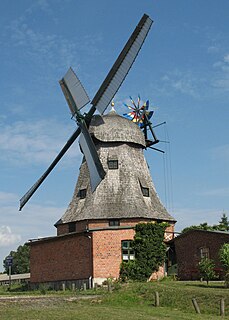Herman Malchow served as a member of the South Dakota House of Representatives from 1893 to 1894. He represented Potter County, South Dakota. Malchow was a resident of Potter County, South Dakota.
Herman Malchow served as a member of the South Dakota House of Representatives from 1893 to 1894. He represented Potter County, South Dakota. Malchow was a resident of Potter County, South Dakota.
| This South Dakota politician-related article is a stub. You can help Wikipedia by expanding it. |

South Dakota is a U.S. state in the Midwestern region of the United States. It is named after the Lakota and Dakota Sioux Native American tribes, who compose a large portion of the population and historically dominated the territory. South Dakota is the seventeenth largest by area, but the fifth smallest by population and the 5th least densely populated of the 50 United States. As the southern part of the former Dakota Territory, South Dakota became a state on November 2, 1889, simultaneously with North Dakota. Pierre is the state capital and Sioux Falls, with a population of about 187,200, is South Dakota's largest city.

Potter County is a county in the U.S. state of South Dakota. As of the 2010 United States Census, the population was 2,329. Its county seat is Gettysburg. The county was created in 1873 and organized in 1883.

Lake County is a county in the U.S. state of South Dakota. As of the 2010 United States Census, the population was 11,200. Its county seat is Madison. The county was formed in 1873.

Faulk County is a county in the U.S. state of South Dakota. As of the 2010 census, the population was 2,364. Its county seat is Faulkton. The county was founded in 1873 and organized in 1883. It is named for Andrew Jackson Faulk, the third Governor of Dakota Territory.
A potter is someone who makes pottery.
Potter County is the name of several counties in the United States:

Frank Morris Byrne was the eighth Governor of South Dakota.

This is a list of properties and historic districts in the U.S. state of South Dakota that are listed on the National Register of Historic Places. The state's more than 1,300 listings are distributed across all of its 66 counties.

Malchow is a municipality in the Mecklenburgische Seenplatte district, in Mecklenburg-Western Pomerania, Germany.
Malchow is a town in Mecklenburg-Vorpommern, Germany.
Potter County Courthouse may refer to:

This is a list of the National Register of Historic Places listings in Potter County, South Dakota.
Herman Otten is an American politician and a Republican member of the South Dakota House of Representatives representing District 6 since January 11, 2013. Otten was formerly the mayor of Tea, South Dakota.

Lake Herman State Park is a South Dakota state park in Lake County, South Dakota in the United States. The park is open for year-round recreation including camping, swimming, fishing, hiking and boating on the 1,350-acre Lake Herman. There are 72 campsites which feature electric hook-ups and 2 cabins.
Forest City is an unincorporated community in Potter County, in the U.S. state of South Dakota.
Gorman is an unincorporated community in Potter County, in the U.S. state of South Dakota.
Whitlocks Crossing is a ghost town in Potter County, in the U.S. state of South Dakota.

The 1964 United States presidential election in South Dakota took place on November 3, 1964, as part of the 1964 United States presidential election. South Dakota voters chose four representatives, or electors, to the Electoral College, who voted for president and vice president.
Eisentraut, Colby, & Pottinger was an architectural firm located in Sioux City, Iowa. It designed a number of buildings, including Carnegie libraries and courthouses, several of which are listed on the National Register of Historic Places. It included principal John P. Eisentraut (1870-1958) and has also been known as Eisentraut and Co..